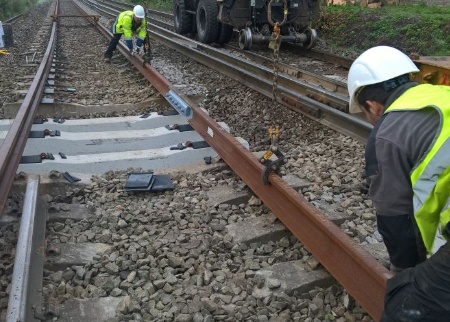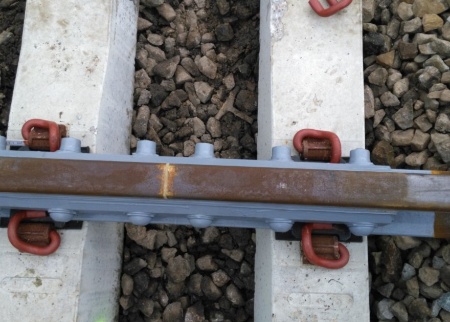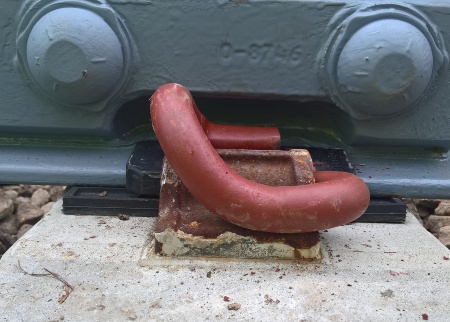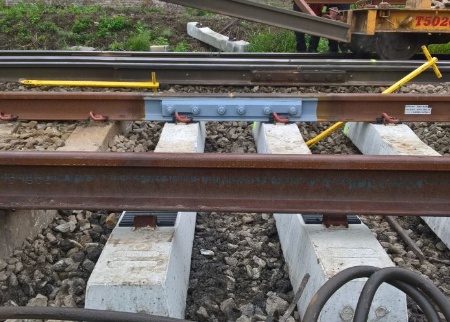The high quality of the NRG joint has been demonstrated convincingly by the results of multiple extensive tests, known to be the toughest in the world. These tests showed that the NRG joint can be exposed to long-lasting heavy forces, water, a variety of climatic conditions (ranging from -20 to +60 degrees) and to more than 10 million deflections of 3 mm with a force of 190 kN without becoming defect. Those deflections are especially interesting, because in practice, the track only makes a 1.2 mm deflection at an allowable load of 22.5-25 tons.
It should be noted that the Belgian rail network is built up differently with rails of the type 60E1R260 instead of the type 54E1R350, which are used in the Netherlands. These are just a bit higher and wider than the Dutch rails. Furthermore, Belgium also uses another rail fastening system called Pandrol instead of the SKL fastening system. The NRG joint can handle this perfectly, because it fits into the Belgian rail network extremely well, as shown in the pictures below!
We would like to thank Infrabel for the confidence in the NRG joint!



